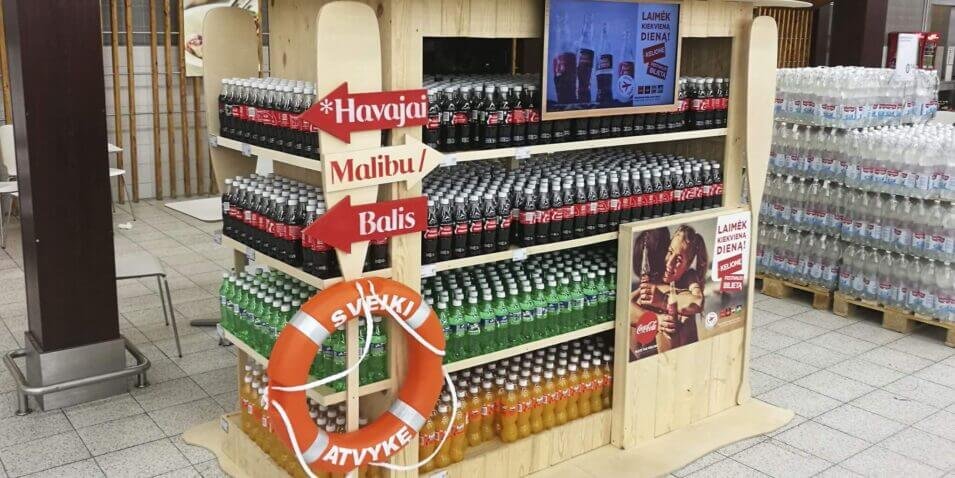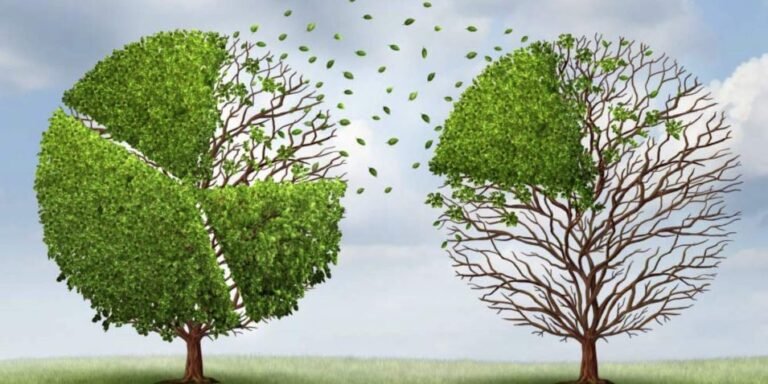POS (Point of Sales) stands, displays, pallet exposition and so on – there are many names, but the goal is the same: drawing the buyer’s attention and sell goods. Thus, what are prevailing trends in choosing the shape of the advertising stand and the materials from which it will be produced.
According to the production materials used, advertising stands are divided into two categories: long-term and single-use. This division determines the choice of production materials – in the first case, the materials used for production are wood, metal or plastic, and in the second – usually cardboard. The days when supermarkets were full of simple, standard advertising displays are over. Today, to draw attention to your product, we have to use creativity and of brave decisions. This task is easier to accomplish when you know the trends and are able to draw inspiration from the right sources.
The prevailing design trends in the world
First, the trends in the development of POS solutions are very often in line with global marketing trends. Today, environmentalists are calling for a reduction in the use of plastics, which is why brands are pursuing policies for green and sustainable development. Clients often refuses plastics materials and more advertising displays are producing from environmentally friendly and recycled materials, such as wood or plywood. In addition to sales promotion, POS materials also have an image building function, so in that case they confirm the environmental policy of a particular brand.
POS material must first reflect the DNA of the brand and this must be clearly communicated to consumers. If we display a premium brand product, those promotional stand must be made from high-quality materials (eg.: Natural wood, varnished steel) and have numerous refining items.
Customer research
When designing promotional stands, it is worth access to the latest research of consumer behaviour at the point-of-sale: in 2017, Great British branch of POPAI – international organization dealing with customer marketing, published a report, which drew attention to the promotional stands with lighting elements, efficiency. 23% of respondents said that a stand with lighting is more encouraging to buy a product than a stand without any lighting. It states that: No less important is the use of scents, i.e.: include aromatic marketing. According to POPAI, smell engages the consumer 75% more than any other human sense. It is important to mention that smells activate the front of the human brain, which is responsible for making decisions.
Inspiration from the past
Inspiration and promotional stands concept using one or another material is drawn from historical periods. Design is increasingly associated with the “retro” style in the design of furniture, stands and advertising shelves. In production, the technology used, allows artificially materials such as wood or steel engraving chisel and simulates old craftmanship. As in pop culture and art, notorious artists are valued after many years. A good example is modern architecture, which increasingly has hints of industrialization. Design is a key element in the material selection process, so it’s worth analysing historical trends not only for you brand, but also for the brand-related industries, in this case directly related to the design of the stand.
Interactive (digitization) solutions
Attracting shoppers attention at the point of sale today is quite a challenge. In the store, from the beginning, for the attention of shoppers are competing a lot of different products, and our decision to buy is influenced by freshly baked bread smell. Adding to this smartphones and FOMO syndrome (Fear Of Missing Out – fear to separate from the smart device and miss important information) impact of the shopping process: it is not easy to get consumer attention and trigger purchase behaviour. That’s why it’s so important for POS materials to stand out in a static retail environment. Individual nuances are also effective in this context: a blinking light effect or screens with sound and motion immediately draw the attention of the distracted user. Another, though less popular solutions are: “3D video mills“, interactive prices, directional speakers, motion sensors, causing some surprise effect, the most common sound. Here we talk about technical solutions and their effectiveness usually depends on the POS shape and selected building materials.
Trends in product categories
It is also worth looking for trends in the creation of POS and choosing material within specific product categories. As we know, advertising stands with the additional functionality at the point of sale are mainly used by food and beverage brands, e.g. FMCG (fast moving consumer goods) category. A good example is the beer industry: where brands usually emphasize the individuality of their products, the production process or the historical period from which the product was originated. This is done by implementation of raw materials or other ingredients that are used in production of product process in the POS project, such as grain or hops. As a result, the POS display only enhances the brand image or often builds it from scratch.
Knowing the latest trends in the design of POS materials makes it easier to create a solution that will effectively drive sales of the advertised product and build the brand image consistent with the communication on other channels. Therefore, the simple advice for those who are looking to make a product specific advertising POS solution is: observe the changing environment both in stores and in the context of traditional marketing communication.
.










